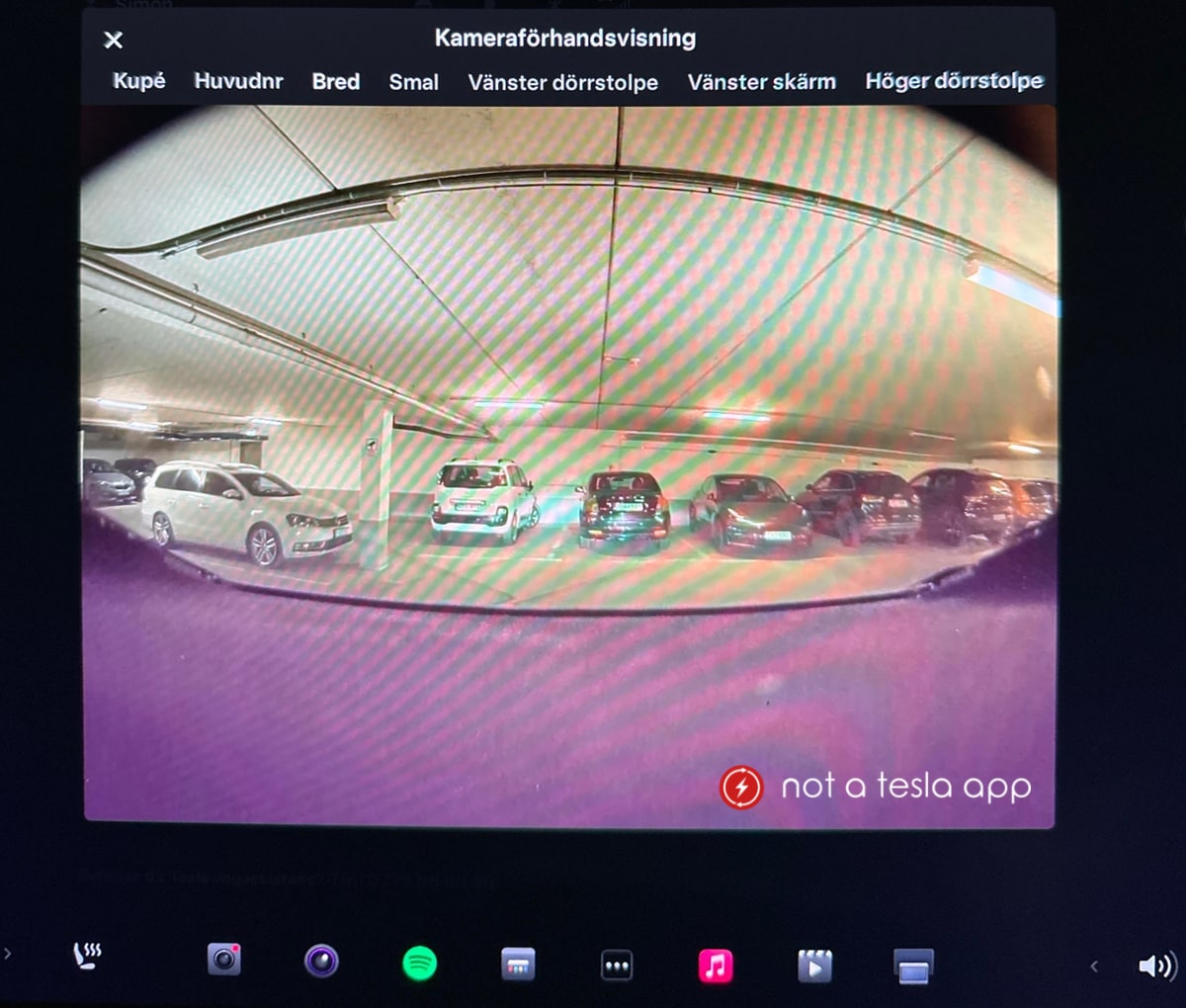This is another one from the " You can't make this stuff up" file.
Rear View Camera
The rearview camera is positioned above the license plate. It provides a view of up to 50 meters behind the vehicle, assisting with parking, reverse driving and reverse automatic emergency braking.
Fender Cameras
Teslas contain a camera on each fender that points toward the rear of the vehicle at about a 45° angle. This allows the vehicle to see vehicles to its side and help monitor the vehicle's blind spots.
These cameras can also be viewed by the driver when using Tesla's blind spot monitor feature, or by enabling the side cameras while in reverse, which displays the reverse camera feed, along with the fender or 'repeater' cameras.
B-Pillar Cameras
Tesla vehicles also include two other side cameras that are found on the B-pillar. Instead of aiming backward like the repeater cameras, these cameras are aimed toward the front of the vehicle. This allows them to capture areas in the front half of the vehicle. These cameras aid with intersections, parking and more. Unfortunately, the video from these cameras can only be viewed while the vehicle is parked and by going to Controls > Service and tapping on 'Preview Cameras'.
Cabin Camera
All current Tesla models include a cabin camera. The camera is located above the rearview mirror and monitors driver attentiveness, especially when Autopilot is in use. You can view the cabin camera onscreen by navigating to Controls > Service > Preview Cabin Camera. You can also view it through the Tesla app if Sentry Mode is enabled and Sentry Mode Live Access is available in your region.
Future Bumper Camera
Looking ahead, newer Tesla models are expected to feature a bumper camera, as seen in the Cybertruck prototypes. Additionally, with hardware 4.0, the cameras have a higher resolution and an anti-glare coating for enhanced visibility.
Functionality Unveiled: The Multifaceted Uses of Tesla's Cameras
Tesla's cameras play a vital role in the advanced features the vehicles are known for. Their primary use is for the Autopilot system and active safety features like Automatic Emergency Braking (AEB). Furthermore, Sentry Mode and Dashcam features use cameras to record potential threats when parked and on the road. In newer models, the cabin camera monitors driver attentiveness to ensure safety during Autopilot use.
View, Access and Calibrate

While driving, you can access the rear and fender cameras through the center display. To test or preview other cameras, you can navigate to Controls > Service > Preview Cameras, and then select the camera you'd like to preview at the top of the screen. In addition, through the Tesla app, remote viewing capabilities are available for five of the vehicle's cameras, including the front-facing camera, fender cameras, rear camera, and cabin camera.
If you're noticing issues with your vehicle's cameras, Tesla provides the ability to calibrate them. It's a simple process initiated from the vehicle's touchscreen, although certain features like Autopilot will be unavailable until the process completes.
Confidentiality in Focus: Tesla's Data Privacy Measures
Tesla takes data privacy seriously. For example, the cabin camera doesn't save or transmit data unless data sharing is enabled in your car's settings. For Sentry Mode and Dashcam footage, data is stored locally and can be accessed only by the owner.
Tesla's advanced camera systems play an integral role in enhancing vehicle safety, providing driver-assist features, and creating a robust security layer. However, understanding the function and usage of these cameras is essential for maximizing the benefits. With Tesla continuously innovating, exciting enhancements, like bumper cameras and upgraded hardware, lie on the horizon, promising to take vehicular safety and autonomy to the next level.

